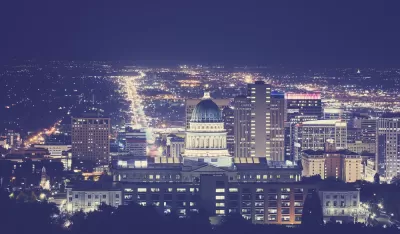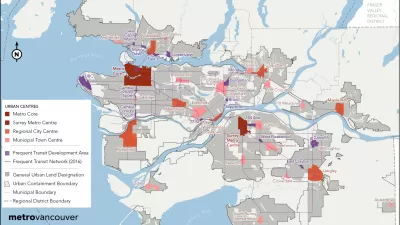A 20-year, voluntary, bottom-up, large-scale, long-term planning effort in Utah has managed to bridge the divide between Mormons and non-Mormons, environmentalists and mining interests, farmers and city-dwellers.

Collin Woodward, a contributing editor with Politico Magazine and author of five books, writes about the 20-year land use planning effort undertaken in the state of Utah. The effort was intended to conserve water use, promote clean air and avoid the destruction of open spaces by slashing housing lot sizes, encouraging higher-density development, and imposing new taxes to build a light rail network and commuter rail system from scratch.
Using a "voluntary, bottom-up, large-scale and long-term—has clicked with the people of a conservative state and bridged historic divisions between Mormons and non-Mormons, environmentalists and mining interests, farmers and city-dwellers. And it came out of an unlikely gathering 30 years ago. Some of the most influential figures in a staid and recession-shocked state came together at a dude ranch owned by the man who was the model for American fiction’s most famous bulldozer-destroying environmental activist."
Growth continues in Utah, writes Woodward: "[T]he challenge ahead is daunting. Last month, the Census Bureau revealed Utah was the fastest growing state in the country, and the majority of the growth is due to its people having the nation’s highest birth rate. Projections show Utah will nearly double its population to 5.4 million by 2050, further compounding the challenge of maintaining the quality of life its people treasure. So in 2013, current Governor Gary Herbert asked Envision Utah to do their magic again, only this time working statewide to determine what Utahns want the place to look like at mid-century."
FULL STORY: How Mormon Principles and Grassroots Ideals Saved Utah

Americans May Be Stuck — But Why?
Americans are moving a lot less than they once did, and that is a problem. While Yoni Applebaum, in his highly-publicized article Stuck, gets the reasons badly wrong, it's still important to ask: why are we moving so much less than before?

Using Old Oil and Gas Wells for Green Energy Storage
Penn State researchers have found that repurposing abandoned oil and gas wells for geothermal-assisted compressed-air energy storage can boost efficiency, reduce environmental risks, and support clean energy and job transitions.

Placekeeping: Setting a New Precedent for City Planners
How a preservation-based approach to redevelopment and urban design can prevent displacement and honor legacy communities.

San Francisco’s Muni Ridership Grew in 2024
The system saw its highest ridership since before the Covid-19 pandemic, but faces a severe budget shortage in the coming year.

Colorado Lawmakers Move to Protect BRT Funding
In the face of potential federal funding cuts, CDOT leaders reasserted their commitment to planned bus rapid transit projects.

Safe Streets Funding in Jeopardy
The Trump administration is specifically targeting bike infrastructure and other road safety projects in its funding cuts.
Urban Design for Planners 1: Software Tools
This six-course series explores essential urban design concepts using open source software and equips planners with the tools they need to participate fully in the urban design process.
Planning for Universal Design
Learn the tools for implementing Universal Design in planning regulations.
Heyer Gruel & Associates PA
City of Moreno Valley
Institute for Housing and Urban Development Studies (IHS)
City of Grandview
Harvard GSD Executive Education
Salt Lake City
NYU Wagner Graduate School of Public Service
City of Cambridge, Maryland




























